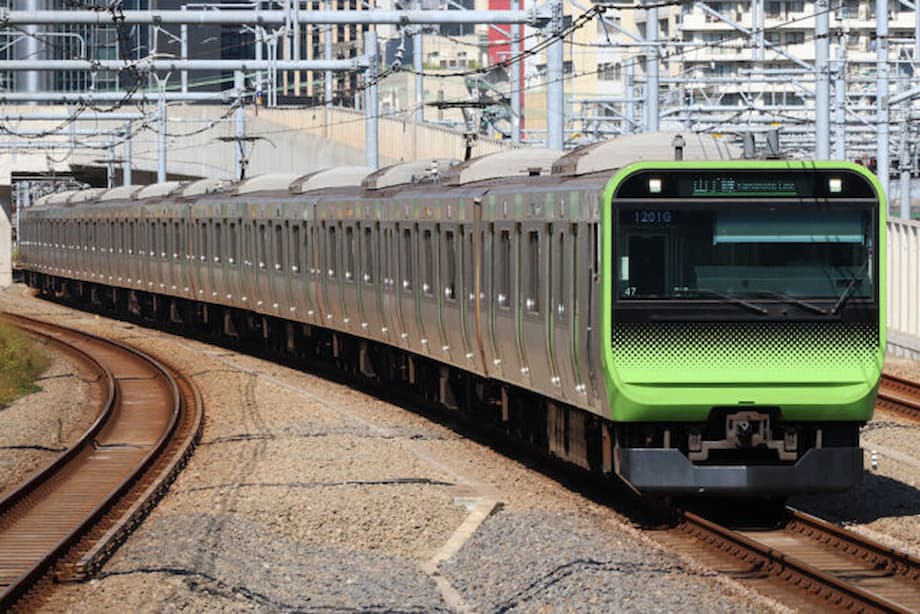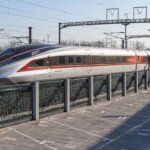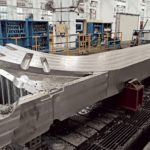JR East Announces First Across-the-Board Fare Hike Since 1987
East Japan Railway Company (JR East), the operator of one of the world’s busiest and most advanced rail networks, has announced it will raise train fares by an average of 7.1% starting in March 2026. This marks the company’s first comprehensive fare increase since its founding in 1987, aside from adjustments related to changes in Japan’s consumption tax. The move, which has received government approval, is set to impact millions of daily commuters and travelers across the Tokyo metropolitan area and eastern Japan.
- JR East Announces First Across-the-Board Fare Hike Since 1987
- Why Is JR East Raising Fares Now?
- Details of the Fare Increase: Who Will Be Affected?
- How Will the Additional Revenue Be Used?
- Modernization and the Future of Rail Travel: Gate-Free Ticketing and Suica Innovations
- Public and Government Reactions
- How Does JR East’s Fare Hike Compare to Other Rail Operators?
- What Should Commuters Do?
- In Summary
The fare hike comes at a time when JR East, like many railway operators in Japan, faces mounting financial pressures from rising operational costs, an aging population, and the lingering effects of the COVID-19 pandemic on ridership. The company says the additional revenue is essential to maintain and improve safety, upgrade aging infrastructure, and invest in new technologies that will shape the future of rail travel in Japan.
Why Is JR East Raising Fares Now?
JR East’s decision to increase fares is driven by several converging factors. The company cites the need to secure more than 400 billion yen (about $2.7 billion) for investments in safety and service improvements. This includes replacing aging train cars, upgrading equipment, and implementing new technologies to keep the network running smoothly and safely.
Inflation and rising labor costs have also put pressure on JR East’s bottom line. Japan’s aging population has led to chronic labor shortages, forcing the company to raise wages to attract and retain skilled workers. Additionally, the cost of materials for infrastructure maintenance and disaster recovery has soared in recent years, partly due to global supply chain disruptions and the increasing frequency of extreme weather events.
JR East President and CEO Yoichi Kise explained the rationale behind the fare hike, stating that it has become increasingly difficult to secure the necessary funds for equipment and repairs solely through business efforts. He emphasized the importance of maintaining safe and reliable railway operations for the public and asked for customers’ understanding regarding the higher fares.
Impact of the COVID-19 Pandemic and Changing Commuter Patterns
The COVID-19 pandemic dealt a significant blow to Japan’s railway industry. Passenger numbers plummeted during the height of the pandemic, and while ridership has been recovering, it remains below pre-pandemic levels. In fiscal 2023, JR East’s passenger transport volume was still less than 90% of what it was in fiscal 2019.
One notable trend has been the slow recovery in the use of commuter passes, as remote work and flexible schedules have become more common. This shift has reduced the steady stream of revenue that commuter passes once provided, further challenging JR East’s financial stability.
Details of the Fare Increase: Who Will Be Affected?
The fare increase will affect all areas within JR East’s jurisdiction, including the densely populated Tokyo metropolitan area and key regional lines. Here are the main changes commuters and travelers can expect:
- Standard fares will rise by an average of 7.8%.
- Commuter passes will see a 12% increase.
- Student commuter passes will rise by 4.9%, with some exceptions for local and specific routes.
- The base fare for the Yamanote Line (Tokyo’s iconic loop line) will increase by 10 yen, from 150 yen to 160 yen.
- For IC card users (such as Suica), the initial fare will rise by 8 to 9 yen for trunk lines and 8 yen for local lines, making IC cards a slightly more economical option than paper tickets.
The fare revision will also introduce several structural changes:
- Integration of fare categories in the Tokyo metropolitan area and within the Yamanote Line into trunk lines, making IC fares more streamlined.
- Review of the discount rate for six-month commuter passes.
- Abolition of barrier-free station fees, which were previously charged to support accessibility improvements.
- Changes to how consumption tax is passed on, shifting from rounding to rounding up.
- Discontinuation of the uniform commuter pass within the Yamanote Line and the off-peak point service.
Examples of Fare Changes
For everyday commuters, the most visible change will be the increase in starting fares. For instance, the fare between Tokyo and Yokohama will rise by 40 yen, reaching 530 yen. The Yamanote Line, which connects major hubs like Tokyo, Shibuya, and Shinjuku, will see its base fare rise to 160 yen. These changes may seem modest in absolute terms, but for regular commuters, the cumulative impact over weeks and months can be significant.
How Will the Additional Revenue Be Used?
JR East expects the fare increases to generate an additional 88.1 billion yen (about $600 million) in annual revenue. The company has outlined several key areas where these funds will be allocated:
- Safety investments: Upgrading and renewing aging infrastructure, such as tracks, signals, and rolling stock, to prevent accidents and ensure reliable service.
- Disaster resilience: Strengthening facilities to withstand earthquakes, typhoons, and other natural disasters, which have become more frequent and severe in recent years.
- Technological innovation: Introducing new systems like gate-free ticketing using GPS and mobile apps, which will streamline passenger flow and reduce operational costs.
- Accessibility improvements: Expanding barrier-free facilities, such as elevators, ramps, and platform doors, to accommodate elderly and disabled passengers.
- Personnel and training: Raising wages and investing in training programs to address labor shortages and maintain high safety standards.
According to a Yomiuri Shimbun editorial, it is crucial that the improved earnings from fare increases are directly linked to passengers feeling a greater sense of security and comfort. The editorial also highlighted recent incidents, such as a coupler problem on the Tohoku Shinkansen and past data falsification issues, as reminders of the importance of ongoing investment in safety and personnel.
Modernization and the Future of Rail Travel: Gate-Free Ticketing and Suica Innovations
One of the most exciting areas of investment is JR East’s plan to modernize its ticketing system. The company has announced that within the next decade, it will introduce scan-free ticket gates for users of its Suica electronic money app. This system will use location data from passengers’ smartphones to determine boarding and exit points, eliminating the need to tap a card or phone at the gate.
This innovation is part of a broader strategy to cut costs and improve convenience. Each ticket gate currently costs tens of millions of yen to install and maintain, and JR East operates around 3,500 gates in the Greater Tokyo Area alone. By moving toward a gate-free system, the company hopes to streamline operations and reduce long-term expenses.
JR East also plans to increase the Suica card limit by 2026 and introduce new features, such as interpersonal payments, making Suica a more versatile cashless payment option. These changes come as other payment technologies, like QR codes and credit card touch payments, gain popularity in Japan’s transportation sector.
Challenges Facing the Railway Industry
The Japanese railway industry is at a crossroads. While Japan’s trains are renowned for their punctuality, safety, and cleanliness, maintaining these standards is becoming increasingly expensive. The country’s declining population means fewer passengers, especially in rural areas, leading to deficits on local lines. In fiscal 2023, JR East’s local lines posted a deficit of 75.7 billion yen.
At the same time, competition from private railways and alternative transportation options is intensifying. To remain competitive, JR East must continue to innovate while balancing the need to keep fares affordable for the public.
Public and Government Reactions
The announcement of the fare hike has sparked a range of reactions from the public and government officials. Some commuters have expressed concern about the increased financial burden, especially for regular users of the Yamanote Line and other major routes. Others recognize the necessity of the increase, given the need for ongoing investment in safety and modernization.
On social media platforms like Reddit, users have discussed the historical context of the fare hike, noting that, assuming zero inflation from now until 2026, the after-tax fare will be higher than it was when JR East started operations in 1987. Some have also pointed out that fare increases could lead to reduced train usage, particularly if alternative transportation options become more attractive.
The Japanese government has played a key role in approving the fare hike. In April 2024, the Ministry of Land, Infrastructure, Transport and Tourism made the rules for calculating fares more flexible, allowing railway companies to better cover the costs of safety investments and disaster recovery. This policy shift reflects a broader recognition of the challenges facing the industry and the need for sustainable funding models.
How Does JR East’s Fare Hike Compare to Other Rail Operators?
JR East is not alone in raising fares. Other major railway companies in Japan are also planning increases:
- JR Hokkaido will raise fares by an average of 7.6% in April 2025.
- JR Kyushu plans a more substantial increase of 15% in April 2025.
These moves reflect a nationwide trend as operators grapple with similar challenges: declining ridership, rising costs, and the need for ongoing investment in infrastructure and technology. The fare increases are expected to help stabilize the financial health of these companies, but they also raise questions about the long-term affordability and accessibility of public transportation in Japan.
What Should Commuters Do?
For most passengers, the best way to minimize the impact of the fare increase is to use IC cards like Suica, which will see slightly lower fare hikes compared to paper tickets. JR East also recommends reviewing commuter pass options, as the discount rates and coverage areas are being revised. Students and families should pay close attention to changes in student commuter pass policies, especially for local and specific routes.
Commuters are also encouraged to stay informed about upcoming technological changes, such as the introduction of gate-free ticketing and expanded Suica features. These innovations may offer new conveniences and potential cost savings in the future.
In Summary
- JR East will raise train fares by an average of 7.1% in March 2026, its first comprehensive fare hike since 1987.
- The increase is driven by rising operational costs, the need for safety investments, and ongoing modernization efforts.
- Standard fares, commuter passes, and student passes will all see increases, with the Yamanote Line’s base fare rising from 150 yen to 160 yen.
- The fare hike is expected to generate an additional 88.1 billion yen annually, funding infrastructure upgrades, disaster resilience, and new technologies like gate-free ticketing.
- Other JR companies, including JR Hokkaido and JR Kyushu, are also raising fares in response to similar challenges.
- Commuters are advised to use IC cards and review pass options to minimize the impact of the fare increase.
- JR East’s investments aim to ensure safe, reliable, and modern rail services for the future, despite a challenging business environment.












